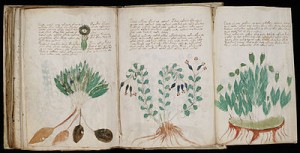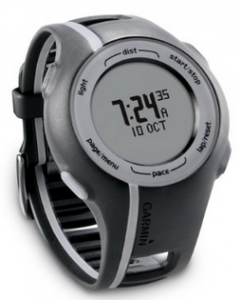 My favorite sci-fi series, Farscape, may be making a return in a movie to be directed by Brian Henson! The screenplay is supposedly being written by Justin Monjo, and there’s no word on filming or release date…but I’m crossing my fingers that this becomes a reality! The movie will focus on the son of John and Aeryn.
My favorite sci-fi series, Farscape, may be making a return in a movie to be directed by Brian Henson! The screenplay is supposedly being written by Justin Monjo, and there’s no word on filming or release date…but I’m crossing my fingers that this becomes a reality! The movie will focus on the son of John and Aeryn.
Climate Change is not Debatable
There was a nice segment on CNN recently about how the media presents climate change as an issue that can be debated, and gives equal airtime to opposing views on an issue which is really about as settled as you can get in science. Check it out below.
Voynich Manuscript
 I learned about something interesting today, the Voynich Manuscript, a 15th-century book that has so far gone untranslated (it’s not written in any known language). Some very minor recent progress has been made in a translation as detailed in this link, though it’s really only a vague starting point and we’re nowhere near understanding this book. This has raised the question of whether this book is all some elaborate hoax? While it’s certainly possible, a hoax of this magnitude (~240 pages!) is not considered very likely (carbon dating does give us the age of the vellum the manuscript is written on). The manuscript appears to be divided into six sections: human biology, herbs, astronomy, cosmology, recipes, and medicine.
I learned about something interesting today, the Voynich Manuscript, a 15th-century book that has so far gone untranslated (it’s not written in any known language). Some very minor recent progress has been made in a translation as detailed in this link, though it’s really only a vague starting point and we’re nowhere near understanding this book. This has raised the question of whether this book is all some elaborate hoax? While it’s certainly possible, a hoax of this magnitude (~240 pages!) is not considered very likely (carbon dating does give us the age of the vellum the manuscript is written on). The manuscript appears to be divided into six sections: human biology, herbs, astronomy, cosmology, recipes, and medicine.
You can viewed high resolution scans of all pages on Yale’s website. Browsing through the manuscript, I came across one image that seemed quite odd, from page 70r:

Does that look familiar to anyone else? It sure reminds me of a Coelacanth, a fish presumed extinct, known only by its fossil record until one was caught off South Africa in 1938:

It’s possible that these fish were known of in the fifteenth century and then forgotten, but these days it’s only found in the Indian Ocean and Indonesia…perhaps providing a clue into the author’s travels?
The Voynich manuscript is a neat mystery…and while I am excited about the prospect of it being someday translated, it’s almost better off in mystery form. You can read more about it over at Wikipedia.
Run tracking in cold weather
When I first started getting serious about running again last spring, I used the RunKeeper app on my iPhone and, coupled with the app running on my Pebble smartwatch, was really liking it. The Pebble app allowed for basic start/stop functionality and stat display. Then, two things happened. First, I discovered Strava, a really cool running site that also offered their own iPhone app. More importantly though…it got cold! Living in Colorado, ‘nice’ weather for running this time of year is temperatures in the teens and sunshine. My limit is about 5 degrees…though that’s pushing it, it’s harder to breathe at that temperature. Most importantly, I’ve found that my iPhone’s battery just doesn’t last when it’s cold and also having to keep the GPS active…it wasn’t able to track my long runs (>5 miles).
 Fortunately, the solution is pretty great! I picked up an inexpensive Garmin Forerunner 110 GPS-enabled sport watch (pictured here; $120 at Amazon). As far as sport watches go, it’s really basic, a true entry level model. However, I’ve found it perfect for my needs. The battery life is great (more on that later), it does a good job of tracking my runs and providing realtime stats. Synchronizing with the Strava website is easy after my runs via a USB cable. The only catch has been that battery life…it should last a long time in standby mode (3 weeks per Garmin), but I’ve found that if I don’t leave it plugged in to my computer to keep the battery top off, the actual battery level is a bit unpredictable when I head out for a run (it was out of juice one time after sitting less than a week). Minor inconvenience really but something to watch out for if you get one of these…just keep it plugged in to your computer when not in use and you’ll be fine. Battery life is supposed to be around 8 hours in active use, but my longest runs so far have been around 2.5 hours so I haven’t really pushed it. The best part is, since this is in constant contact with my skin, I expect the air temperature won’t have nearly as much impact on battery life as it did with my iPhone.
Fortunately, the solution is pretty great! I picked up an inexpensive Garmin Forerunner 110 GPS-enabled sport watch (pictured here; $120 at Amazon). As far as sport watches go, it’s really basic, a true entry level model. However, I’ve found it perfect for my needs. The battery life is great (more on that later), it does a good job of tracking my runs and providing realtime stats. Synchronizing with the Strava website is easy after my runs via a USB cable. The only catch has been that battery life…it should last a long time in standby mode (3 weeks per Garmin), but I’ve found that if I don’t leave it plugged in to my computer to keep the battery top off, the actual battery level is a bit unpredictable when I head out for a run (it was out of juice one time after sitting less than a week). Minor inconvenience really but something to watch out for if you get one of these…just keep it plugged in to your computer when not in use and you’ll be fine. Battery life is supposed to be around 8 hours in active use, but my longest runs so far have been around 2.5 hours so I haven’t really pushed it. The best part is, since this is in constant contact with my skin, I expect the air temperature won’t have nearly as much impact on battery life as it did with my iPhone.
BPA directly linked to cancer (in mice)
 BPA is one of those chemicals that has caused a lot of fear in recent years…but also some uncertainty. More and more though, it sounds like nasty stuff that’s best avoided (if possible). A new study found a direct correlation between BPA consumption and the rate of cancer in mice (read more about the study here). We’re lagging behind the rest of the world on this issue (the FDA still allows it), and unfortunately, its replacement, BPS, is pretty much an unknown, it may or may not have issues of its own. So what can you do? The same thing you do if you want to eat healthy overall. Avoid prepared and processed foods. Buy fresh ingredients and cook your own meals. At least try to minimize your exposure to BPA. You can read more about BPA over at Wikipedia.
BPA is one of those chemicals that has caused a lot of fear in recent years…but also some uncertainty. More and more though, it sounds like nasty stuff that’s best avoided (if possible). A new study found a direct correlation between BPA consumption and the rate of cancer in mice (read more about the study here). We’re lagging behind the rest of the world on this issue (the FDA still allows it), and unfortunately, its replacement, BPS, is pretty much an unknown, it may or may not have issues of its own. So what can you do? The same thing you do if you want to eat healthy overall. Avoid prepared and processed foods. Buy fresh ingredients and cook your own meals. At least try to minimize your exposure to BPA. You can read more about BPA over at Wikipedia.



